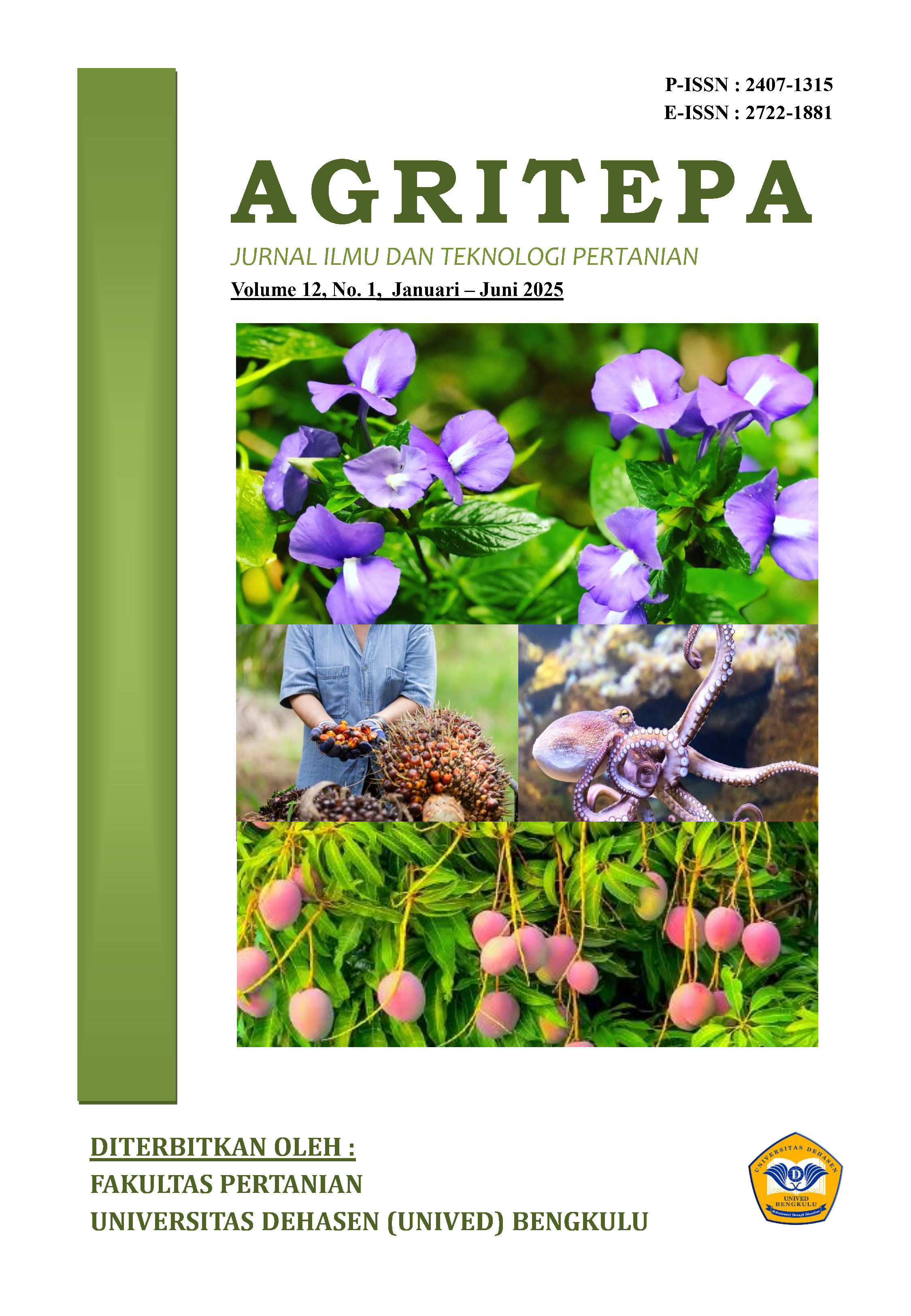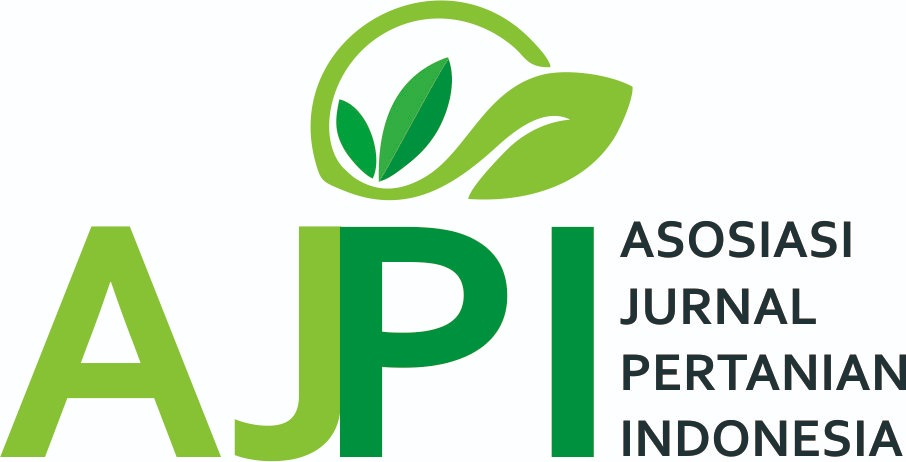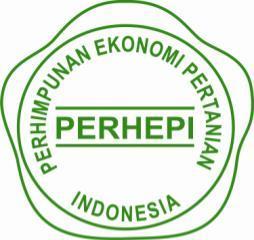A Income And Efficiency Of Spring Onion Farming With Different Planting Patterns In Selupu Rejang District Rejang Lebong Regency
Abstract
Purpose: This study aims to analyze the income and efficiency of spring onion farming with different planting patterns. Methodology: This research was conducted in Selupu Rejang District, Rejang Lebong Regency in November 2024. The sample in this study was determined by purposive sampling method with a total sample size of 78 farmers. The data used were primary data and secondary data. The analytical methods used include cost analysis, income, efficiency and comparative analysis. Results: The intercropping pattern (spring onion-broccoli) gave the highest average income and real efficiency of Rp16,210,364/Ut/MT or equivalent to Rp38,610,249/Ha/MT, and an efficiency value of 2.3. Findings: The intercropping pattern of leek farming provides higher income and efficiency than the monoculture pattern. Novelty: This study analyzes the comparison of income and efficiency of leek farming patterns in three different cropping patterns. Originality: The intercropping pattern of spring onion with a combination of broccoli and mustard greens is still rarely studied. Conclusion: Income and real efficiency of monoculture and intercropping patterns are different, while income and unreal efficiency are not different. Type of Paper: Empirical Research Article.
Downloads
Copyright (c) 2025 anggun saputri, bambang sumantri, ellys yuliarti, Alfayanti Alfayanti (Author)

This work is licensed under a Creative Commons Attribution-ShareAlike 4.0 International License.
Author retains the copyright and grants the journal the right of first publication of the work simultaneously licensed under the Creative Commons Attribution-ShareAlike 4.0 License that allows others to share the work with an acknowledgement of the work's authorship and initial publication in this journal













